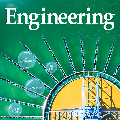Many problems in science and engineering can be represented by a set of partial differential equations (PDEs) through mathematical modeling. Mechanism-based computation following PDEs has long been an essential paradigm for studying topics such as computational fluid dynamics, multiphysics simulation, molecular dynamics, or even dynamical systems. It is a vibrant multi-disciplinary field of increasing importance and with extraordinary potential. At the same time, solving PDEs efficiently has been a long-standing challenge. Generally, except for a few differential equations for which analytical solutions are directly available, many more equations must rely on numerical approaches such as the finite difference method, finite element method, finite volume method, and boundary element method to be solved approximately. These numerical methods usually divide a continuous problem domain into discrete points and then concentrate on solving the system at each of those points. Though the effectiveness of these traditional numerical methods, the vast number of iterative operations accompanying each step forward significantly reduces the efficiency. Recently, another equally important paradigm, data-based computation represented by deep learning, has emerged as an effective means of solving PDEs. Surprisingly, a comprehensive review for this interesting subfield is still lacking. This survey aims to categorize and review the current progress on Deep Neural Networks (DNNs) for PDEs. We discuss the literature published in this subfield over the past decades and present them in a common taxonomy, followed by an overview and classification of applications of these related methods in scientific research and engineering scenarios. The origin, developing history, character, sort, as well as the future trends in each potential direction of this subfield are also introduced.
翻译:科学和工程领域的许多问题可以通过数学模型的数学模型来体现。根据PDE的基于机制的计算长期以来一直是研究诸如计算流体动态、多物理模拟、分子动态、甚至动态系统等专题的基本范例。这是一个充满活力的多学科领域,其重要性日益增加,具有非凡的潜力。与此同时,高效解决PDE是一个长期挑战。一般而言,除了少数有分析解决方案可直接得到的差别方程式外,还有许多基于分析的方程式必须依赖数字方法,例如有限差异法、有限元素法、有限数量法和边界要素法。这些数字方法通常将一个连续的问题域分割为离散点,然后集中解决每个点的系统。尽管这些传统数字方法的有效性,伴随每个步骤的大量迭接行动大大降低了效率。最近,另一个同样重要的范例,即以深层次学习为代表的数据计算,已经出现作为解决PDE的有效手段。 令人惊讶的是,在这个有趣的次类别中,对这个有趣的次类别进行的全面审查,在本次分层次的分类中,我们目前所出版的关于这个分级的分级的分级的分级的分级的分级的分级的分级的分级的分级的分级,这个分级的分级的分级的分级的分级的分级的分级的分级的分级的分级的分级的分级的分级的分级的分级的分级的分级的分级的分级的分级的分级的分级的分级的分级的分级, 。本级的分级的分级的分级的分级的分级的分级的分级的分级的分级的分级的分级的分级的分级的分级的分级的分级的分级的分级的分级的分级的分级的分级的分级的分级的分级的分级的分级的分级的分级的分级的分级的分级的分级的分级的分级的分级的分级的分级的分级的分级的分级的分级的分级的分级的分级的分级的分级的分级的分级的分级的分级的分级的分级的分级的分级的分级的分级的分级的分级的分





